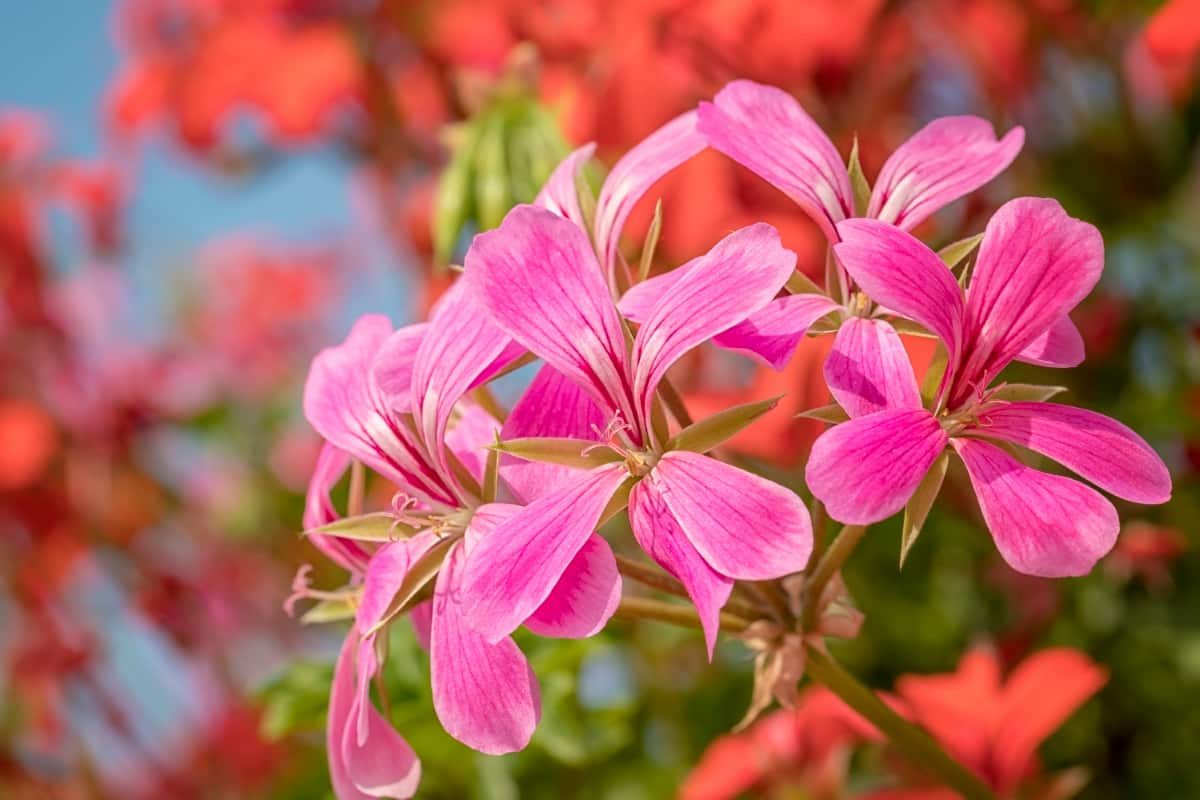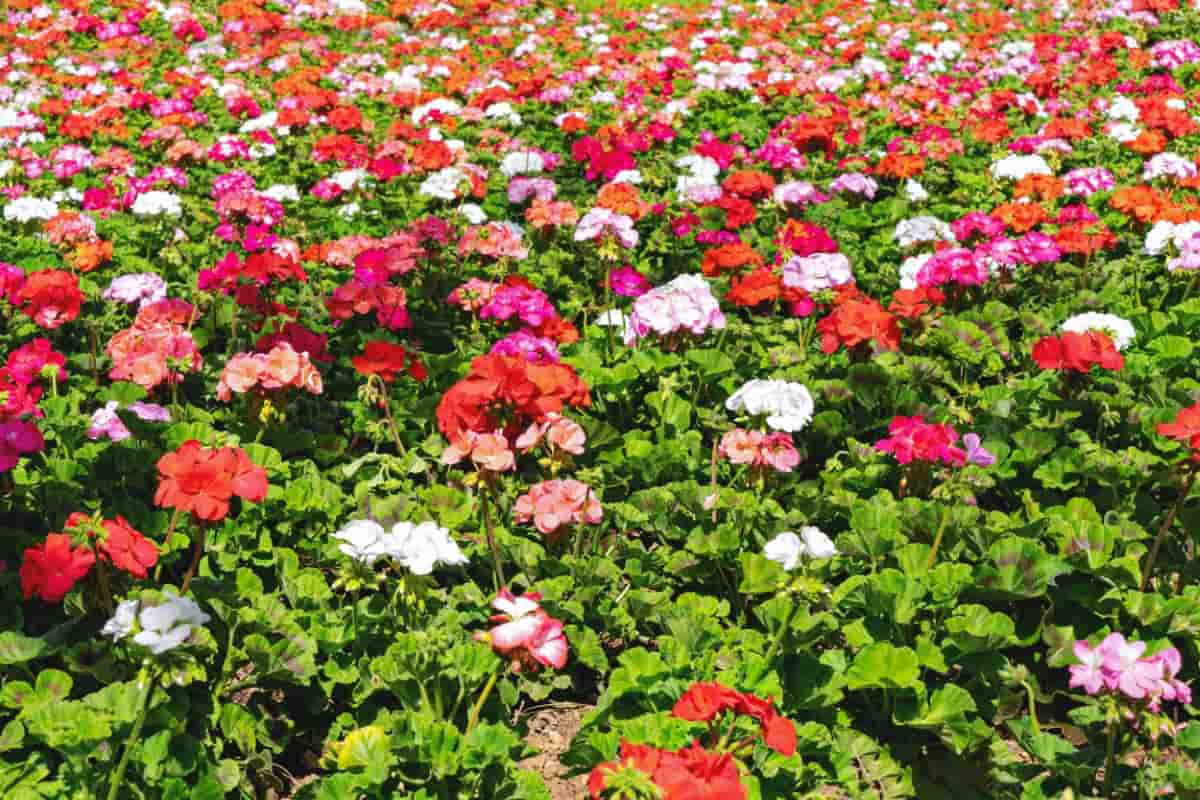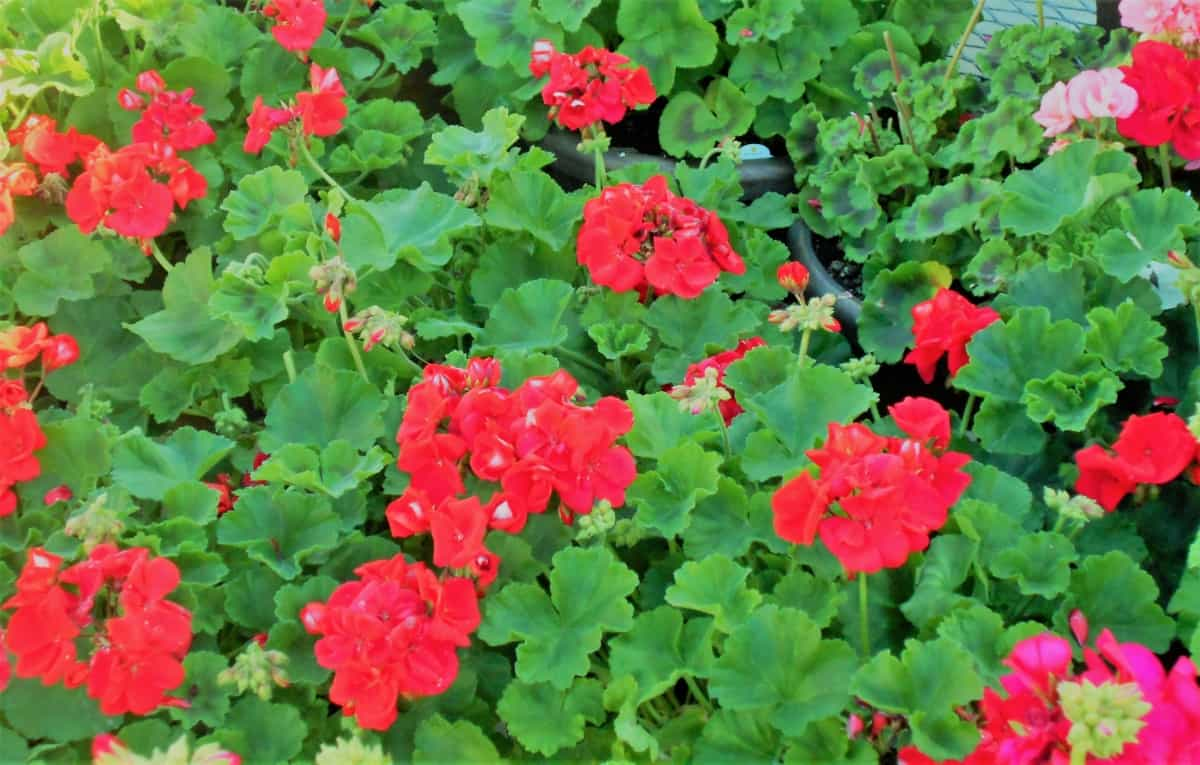Geranium farming in India has emerged as a highly profitable venture due to its essential role in the oil industry, especially in perfumery, aromatherapy, and pharmaceutical sectors. The story of Mr. Patel, a farmer from Gujarat, stands as a testament to this success. Facing the ups and downs of traditional farming, including challenges with crops like banana, he discovered the potential in geranium farming.

While the best intercrop for banana might vary, Mr. Patel’s focus shifted from conventional crops, such as banana plantation per acre or intercropping banana with papaya and potato, to the more lucrative geranium. He no longer relied on the variable output from banana cultivation PDF guides or modern banana farming techniques. Instead, he embraced the promising future of geranium cultivation, moving away from traditional banana management practices PDF and banana plantation spacing guidelines to a crop that offered stability and higher financial returns.
Success Story of a Geranium Farmer
Mr. Patel’s Journey into Geranium Farming
Inheriting his family’s farm, Mr. Patel initially grappled with the instability of traditional agriculture, especially with fluctuating market prices and unpredictable weather. However, his discovery of geranium farming marked a turning point.
With the help of agricultural experts and financial aid from government schemes, he took a leap of faith into commercial geranium cultivation. His journey is a shift from traditional methods, like banana intercropping with potato or the rigid banana plantation spacing, to a more innovative and profitable crop, proving that with the right information and support, a farmer can transform their fortunes.
Adoption of Modern Techniques
Mr. Patel’s embrace of modern agricultural techniques was a key factor in his success. He invested in drip irrigation, which is more efficient than traditional watering methods used in banana farming. His use of organic fertilizers and specialized pest control measures was tailored specifically for geraniums, differing significantly from general practices in banana cultivation.
The establishment of a structured greenhouse ensured the best growing conditions, a step away from the open-field banana management practices. This strategic shift in farming approach allowed him to maximize both yield and quality in his geranium cultivation.
Market Research and Networking
A deep understanding of the market for geranium oil was pivotal in Mr. Patel’s journey. He actively sought connections with essential oil companies, exporters, and local distilleries, building a network that provided reliable outlets for his produce. This networking was a stark contrast to the more straightforward market for crops like bananas. By fostering strong industry relationships, he ensured that his geranium harvest was sold at competitive prices, securing his financial success.
Diversification and Value Addition
Beyond just growing geraniums, Mr. Patel ventured into value addition. He set up a distillation unit on his farm, a significant step up from basic banana farming. This allowed him to extract geranium oil directly, enhancing his profit margins. He also explored the production of geranium-based organic products like soaps and candles, diversifying his business and increasing his revenue streams, a concept not commonly seen in traditional banana farming.
Sustainable Practices and Certification
Mr. Patel’s commitment to sustainability led him to obtain organic certification for his geranium farm. This not only enhanced the credibility of his produce but also gave him access to premium markets, a strategy not commonly employed in standard banana farming. This focus on sustainable and certified farming practices set him apart, allowing him to command higher prices and appeal to a more environmentally conscious consumer base.
In case you missed it: How to Overwinter Geraniums: A Guide to Cold and Warm Regions

Financial Gains and Expansion
Mr. Patel’s strategic and dedicated approach led to remarkable financial gains, with earnings averaging between 2 to 3 lakhs per acre annually from geranium farming. These earnings significantly surpassed what he might have earned from traditional crops like bananas. His success encouraged him to expand his geranium cultivation area and diversify into related business ventures, showcasing the enormous potential in alternative, high-value crops.
Commercial Geranium Varieties
In his venture into geranium farming, Mr. Patel explored a range of commercial geranium varieties, each catering to different market needs and preferences. Some of the prominent varieties included the Bourbon Geranium. This variety is known for its sweet and rosy scent, making it ideal for perfumery. Another variety, the Egyptian Geranium, is favored for its strong and uplifting aroma and is commonly used in aromatherapy.
In case you missed it: How to Grow and Care for Geranium in Pots: Planting Instructions for Beginners

The Rose-scented Geranium, as the name suggests, has a distinct rose-like fragrance. This makes it popular in both the cosmetic and culinary industries. Lastly, the Lemon-scented Geranium is sought after for its refreshing and clear lemony scent. It is widely used in making organic soaps and candles. These varieties not only varied in their olfactory profiles but also in their oil yields and adaptability to different climatic conditions, allowing Mr. Patel to maximize his farm’s productivity and cater to a diverse range of clients in the essential oil market.
Sustainable Practices and Certification
Understanding the importance of sustainable farming practices, Mr. Patel implemented eco-friendly methods in his geranium cultivation. He transitioned from the more traditional farming techniques to organic methods, ensuring his farm was environmentally sustainable. This shift not only benefited the ecosystem but also enhanced the quality of his geranium crops. Realizing the growing consumer preference for organic products, he pursued and obtained organic certification for his farm.
This certification was a significant step as it increased the trust and credibility of his produce among consumers and opened up new markets, especially those that prioritize organic and eco-friendly products. Mr. Patel’s commitment to sustainable farming practices not only set a benchmark for other farmers but also played a crucial role in differentiating his products in a competitive market.
Financial Gains and Expansion
The switch to geranium farming proved to be financially transformative for Mr. Patel. With earnings ranging from 2 to 3 lakhs per acre annually, his income from geranium cultivation far exceeded what traditional crops like bananas could offer. This financial success was not just a result of switching crops but also stemmed from his strategic approach, including market research, adoption of modern farming techniques, and diversification into value-added products.
In case you missed it: How to Start Geranium Farming: A Step-By-Step Planting to Harvest Guide

Buoyed by this success, Mr. Patel expanded his cultivation area, further increasing his earnings. His financial achievements are a beacon of hope and inspiration for other farmers, demonstrating the potential profitability of diversifying into less conventional but more lucrative crops like geranium.
Conclusion
Mr. Patel’s story is a powerful example of how strategic planning, adoption of modern techniques, market awareness, diversification, and sustainability can transform traditional farming into a highly profitable business. His success with geranium farming, moving away from conventional crops like bananas, demonstrates the potential for exploring alternative, high-value crops. His journey serves as an inspiration to other farmers, showing that with the right approach, farming can be both sustainable and highly profitable.
- Feed Your Flock for Less: Top 10 Tips to Save on Chicken Feed
- Ultimate Guide to Ossabaw Island Hog: Breeding, Raising, Diet, and Care
- Hatching Answers: The Top 10 Reasons Your Chickens Aren’t Laying Eggs
- Eggs and Economics: Breaking Down the Cost of Raising Backyard Chickens
- Defend Your Greens: Proven Methods to Keep Iguanas Out of Your Garden
- Ultimate Guide to Cinnamon Queen Chicken: A Comprehensive Guide for Beginners
- Ultimate Guide to California Tan Chicken: Breeding, Raising, Diet, Egg-Production and Care
- Ultimate Guide to Marsh Daisy Chicken: Breeding, Raising, Diet, and Care
- 10 Types of Chicken Farming Businesses You Can Start for Profits